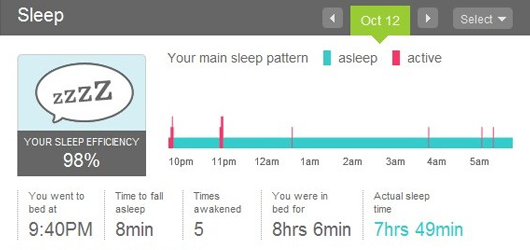I look at my Google Analytics every single day. I find it so fascinating to see all the data, figure out what it means, and try to find interesting patterns. The other day, I did a comparison of site visitors versus bounce rate, and I had a moment of celebration because my bounce rates went from 46.5% to 1.90%Continue reading
The New ROI: Reach Of Influence
When it comes to measuring the success of marketing communications, brands need to change they way they think. It’s no longer about Return On Investment, it’s about Reach Of Influence.
In a recent Nielson Company report, the monthly minutes the average US consumer dedicated to some type of social network activity increased by 210 percent from December 2008 to December 2009. This rapidly growing social environment is one that brands need to learn how to engage in and, more importantly, measure. It’s no longer just the voice of the brand, its the voice of community, and that voice is louder and more influential than ever before.
Social technology allows for anyone with Internet access be either a brand ambassador or an adversary. As technology continues to seamlessly blend with our lives, communities, and conversations, measuring the influence of consumer-to-consumer relationships will become a central building block to the new metrics that are needed.
Industry experts agree that current metrics are insufficient and outdated. In the AdAge article Taking Online-Ad Measurement Beyond the Click, Abbey Klaseen wrote about the scrutiny of whether it’s effective to use a click to measure online advertising. The argument is that the click does not take into account into any other influencing factors, whether prior online expose or offline marketing activity. Andrea Kerr Redniss, Senior VP-digital at Optimedia comments concerning the click measurement, “It’s the closest thing to a standard, but it doesn’t mean anything to anybody, and CMOs are just tired of hearing about it.”
A measurement such as Reach Of Influence is about understanding how individuals are able to extend the reach of a brand’s marketing communications from simply business-to-consumer to consumer-to-consumer. In effect, this would allow brands to measure how the life of a particular piece of media is extended as it is shared from person to person within an individual’s network.
New social technologies have made the creation of content more accessible to the general Internet user resulting in a drastic increase in user generated content. Further, it is expected that soon the information on the Internet will double every 72 hours – partially due to the democratization of content creation. If brands are finding it difficult to reach users today and measure the effectiveness of their messages, it would appear as their challenges are only just beginning.
Instead of focusing on being heard in a sea of user generated content (of which, security firm Websense reports that 95% of all user generated content is spam), brands should change their focus to develop a more thorough understanding of user referred content. Being able to quantify the total reach of a piece of media by way of a single individual’s influence within their social communities will be integral to the future of successful campaigns.
Traditional marketing communications measurements are no longer relevant. A click measurement doesn’t provide a full understanding of the influencing power of the community. Industry experts agree that it is time for a new standard. As the social environment continues to rapidly evolve, brands need to have new metrics that measure the impact of the conversations within this environment. A measurement such as Reach Of Influence would provide greater insight into the influence of the individuals, and not just the piece of content.
How Personal Metrics Can Change Our Lives
America is trapped in a consumption driven lifestyle, and the consequences of our actions are being revealed more now than ever before. Our economy has reached a state of turmoil not seen since the Great Depression. In March 2009, the collective credit card debt of Americans was just over $940 billion. Our nation’s obesity levels have reached ultimate highs with two thirds of adults and one third of children in America are obese. And, we are in the middle of a massive climate crisis. The United States per capital carbon dioxide emissions in 2005 were more than four times greater than China’s and almost fourteen times India’s.
Have we become blind to the consequences of our actions?
There is an eminent need to quantify our behavior and bring more transparency and understanding to the effects that our actions have.Continue reading


